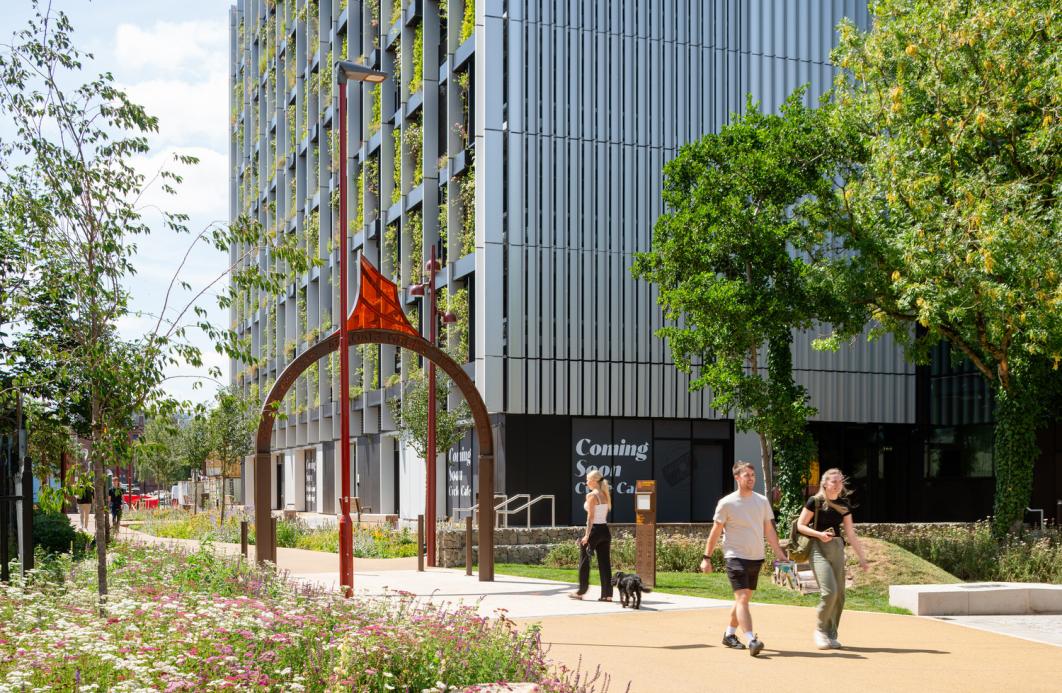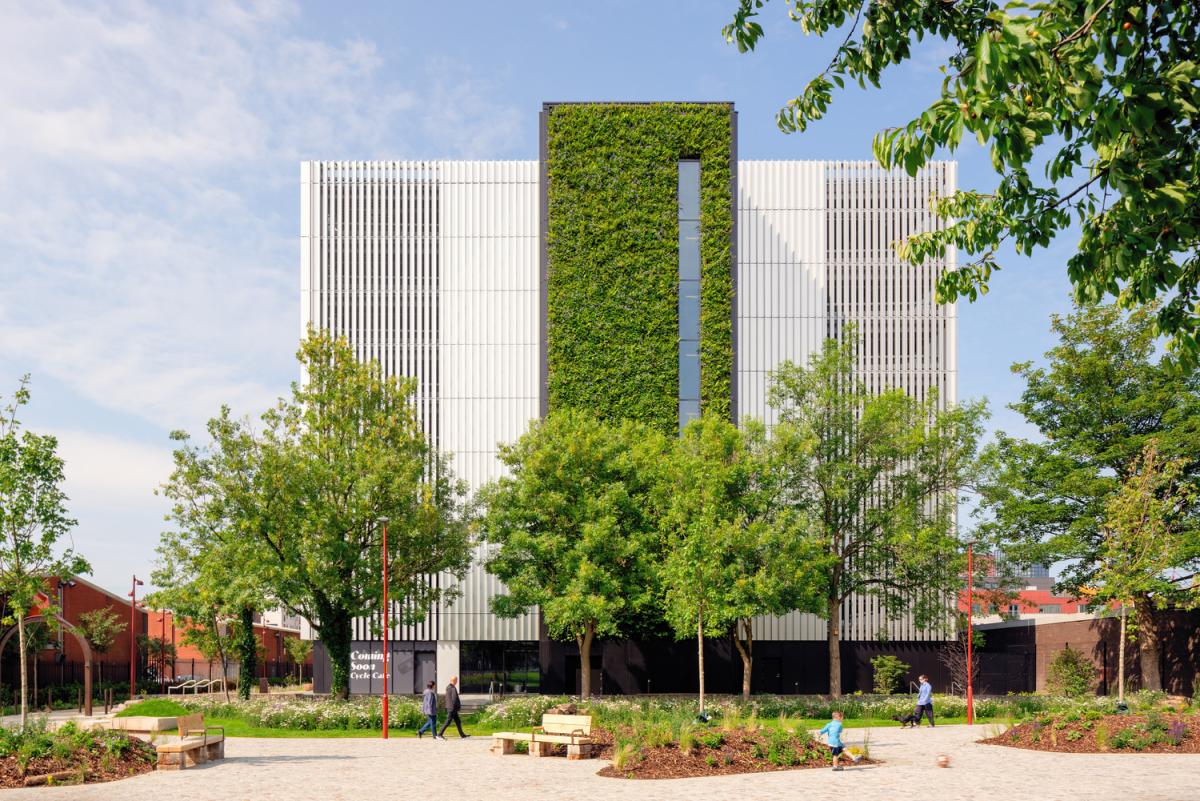
Ancoats Mobility Hub opened earlier this month (May), followed by the transformed Ancoats Green. The Mobility Hub is more than a car park. Designed for Manchester Life, it stands as a transformative piece of green infrastructure in the heart of Manchester, and the only one of its kind in the country. It's purpose is to transform a neighbourhood over time, pioneer new ways of getting around and encourage people to choose greener and healthier transport options. Ancoats Mobility Hub is a key element of the £40m+ investment in the area, funded largely by Homes England.
With over 400 car parking spaces, 150 secure bike parking spaces and 102 EV charging points, Ancoats Mobility Hub is a step towards making Ancoats a greener neighbourhood. The plans accelerate the move away from petrol and diesel vehicles, improve air quality and protect the environment. By bringing parking together in one place, it will also ensure future developments - including No. 1 Ancoats Green - are car-park free, so urban designers can focus on creating places for people to relax and enjoy.
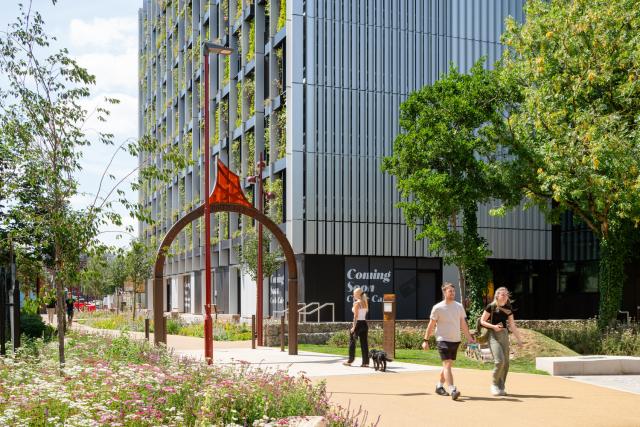
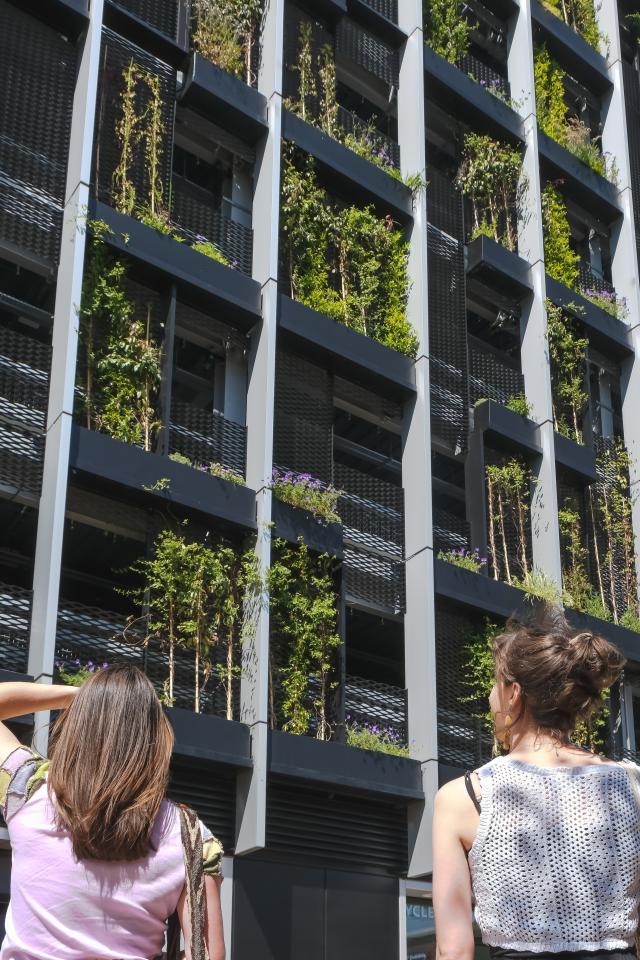
To celebrate the opening of the Hub, the new Ancoats Green (designed by Planit) and the first flat showing of No.1 Ancoats Green (formerly known as Rodney Street), Manchester City Council hosted a community day. The event was a celebration for residents and stakeholders to showcase the new public realm and local amenities.
The opening event, featuring music, food and creative workshops run by Altogether Otherwise, was a great way to bring together the community. Seeing those involved in the project gathered to celebrate the ongoing development of the area really drove home the importance of the Ancoats regeneration. The regeneration will make Ancoats a pedestrian-first neighbourhood and support Manchester's 2038 net zero goals.
Ancoats Mobility Hub is sustainable in both its design and purpose. As well as supporting Manchester's 2038 net-zero goals, it was built with low-carbon construction. Hundreds of photovoltaic panels are installed on the roof and living green walls.
The living green wall is the central feature of Ancoats Mobility Hub. The wall scales the entire height of the building with planting carefully chosen for their pollution-absorption, urban tolerance and year-round flowering. Just one square metre of wall planting can extract 2.3kg of carbon dioxide and produce 1.7kg of oxygen.
Commenting on Buttress' role in the design work for Ancoats Mobility Hub, No.1 Ancoats Green and Eliza Yard, Matthew Burl, Buttress director:
“The opening of the Ancoats Mobility Hub is about so much more than mobility. It’s about giving streets back to people, creating space for community life to flourish, and embedding sustainability into the everyday experience of the city. It’s been a privilege to help shape this important project for our own local neighbourhood of Ancoats. Our new housing development for This City, No. 1. Ancoats Green, is due to be finished this summer and Eliza Yard for Manchester Life will complete in the spring next year. Both will add thoughtfully designed apartments and townhouses to complement all of the benefits of Ancoats life and the new park."
Leader of the Council Bev Craig said:
“The Ancoats Mobility Hub is a central piece of neighbourhood infrastructure that will help to put people at the heart of this community, rather than car traffic.
This is part of over £40m investment in the area’s public realm, which will also unlock1,500 new homes of different types, new walking and cycling routes, and complements beautifully the investment that we are soon to complete at the newly refurbished Ancoats Green.
Rather than being a car park or cycle store, last mile delivery hub and new commercial space, this development is a blueprint for how we can create cleaner, greener communities – with few cars and more space for people to enjoy their space in a more peaceful, safer setting.”
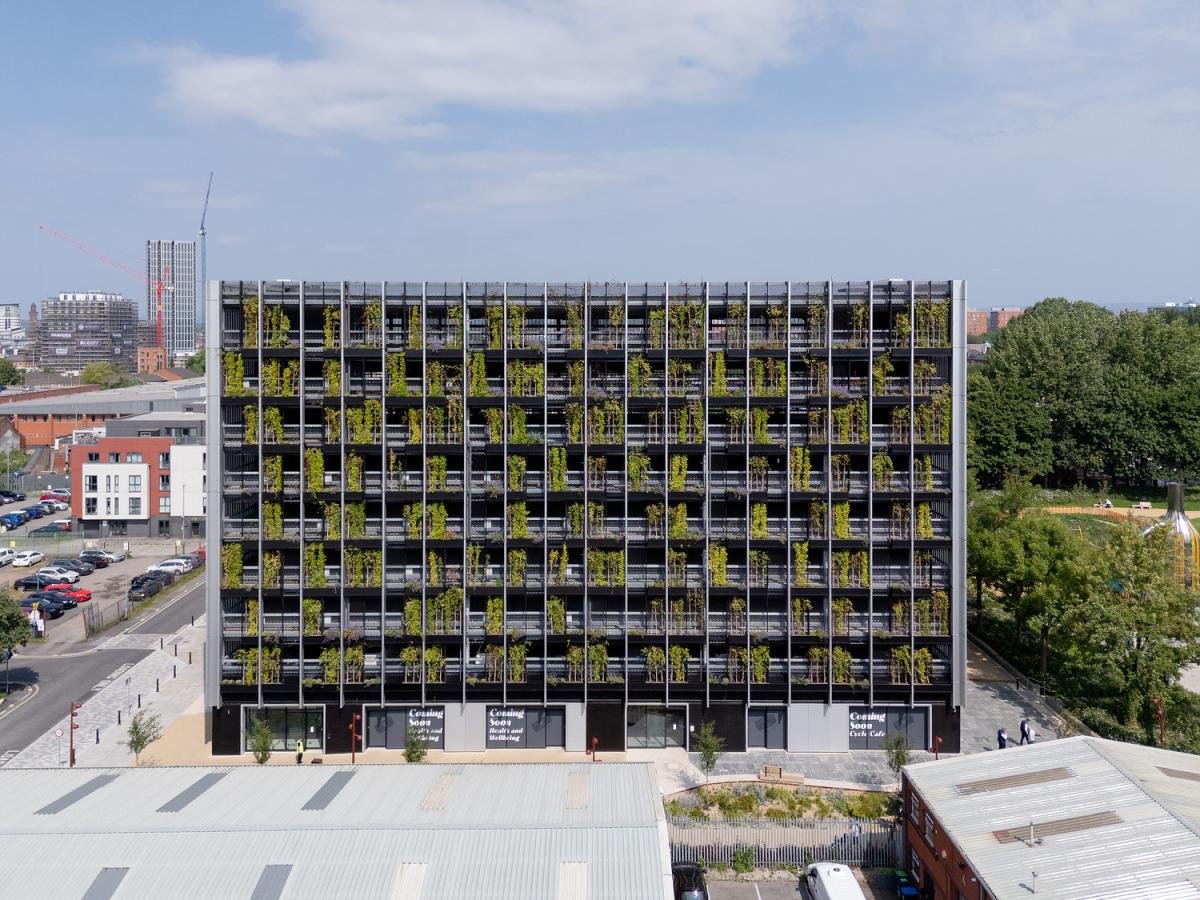
Kim Challis, APCOA Regional Managing Director UK&I commented:
“We are proud to manage this prestigious site in partnership with Manchester City Council. Our proven track record with the design and build of APCOA Urban Hubs in Carmarthenshire, Manchester and Sheffield strengthened our offering, and we are delighted that the outstanding sustainability credentials of the new Ancoats Hub align closely with our own commitment to the environment. We look forward to being an integral part of this unique investment and to collaborating with the Council to incorporate feedback from residents and businesses as the hub becomes an essential part of local life.”
Max Wilson, Spokesafe’s founder said:
“We’re delighted to manage the cycle parking facility within Ancoats Mobility Hub. Best-in-class cycle parking should be as simple to book and access as a train or a plane - and any cyclist can book their rack at Ancoats instantly via the Spokesafe app. This facility is set to be a landmark one for both Manchester & the UK as a whole, and we’re excited to play our part in helping the local community travel by bike more often.”
Pauline Schaffer, Director of Infrastructure Funding at Homes England, said:
“The new Ancoats Mobility Hub is an excellent example of how funding from Homes England is helping to create vital infrastructure to support thriving places people can be proud of.
“It’s great to see the Hub setting the tone for a sustainable neighbourhood with a design centred around residents’ needs. The new Hub provides supporting infrastructure to enable sites like Eliza Yard, Jersey Wharf, Phoenix Ironworks and No1 Ancoats Green to begin development, supplying the local area with much needed new homes.”
Anna Marohn, Principal Landscape Architect commented from Planit:
“It’s been a real privilege to work on delivering the new Ancoats Green. A verdant space in the heart of Manchester city centre for the community, celebrating the area’s rich heritage and with sustainability at its core.
“The dramatic enhancements will see an increase in Biodiversity. The use of wildflower meadows, structural herbeacous planting, addition of 41 new trees, bug hotels and bird boxes integrated creatively throughout the space, will encourage nature back into the city. Climate resilient and reclaimed materials have been used extensively throughout the park, including SUDS with rain gardens located within the green, and porous asphalt for the footpaths."
Photography credits
Gavin Stewart
Planit
